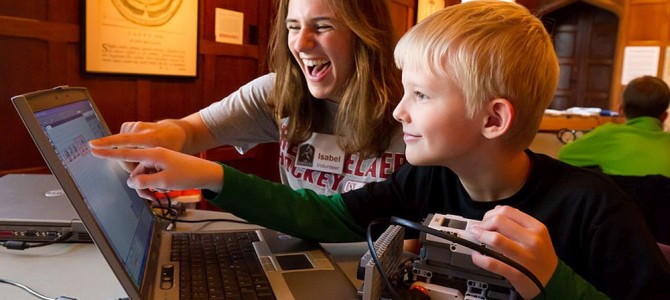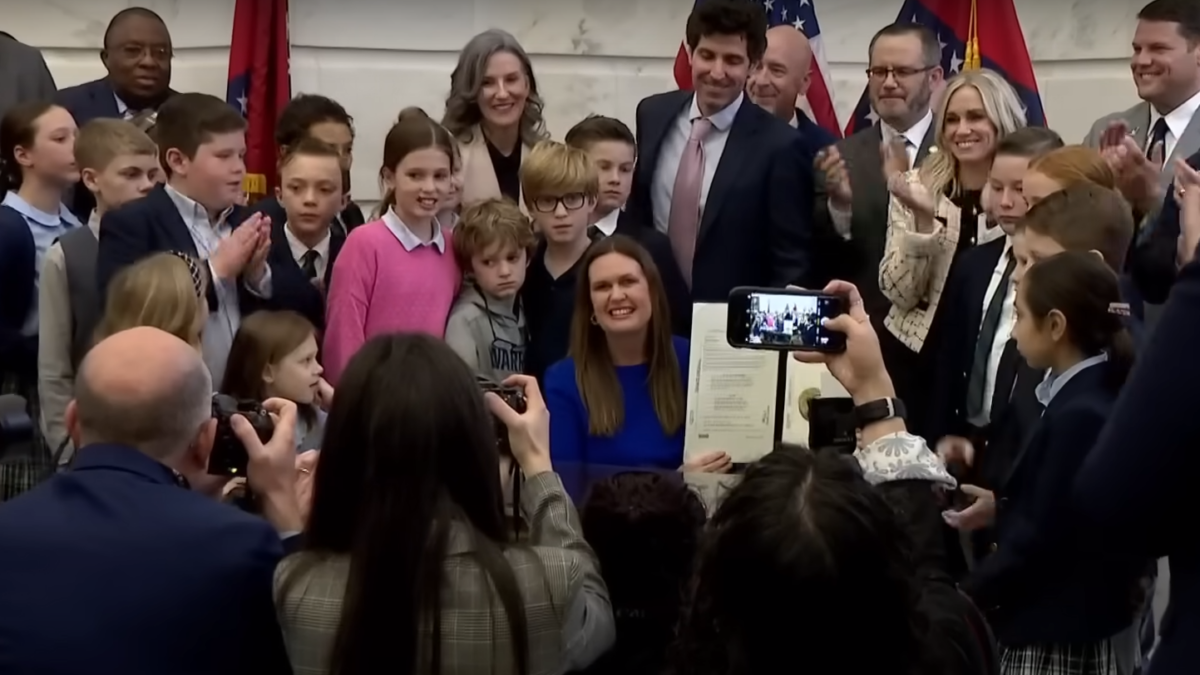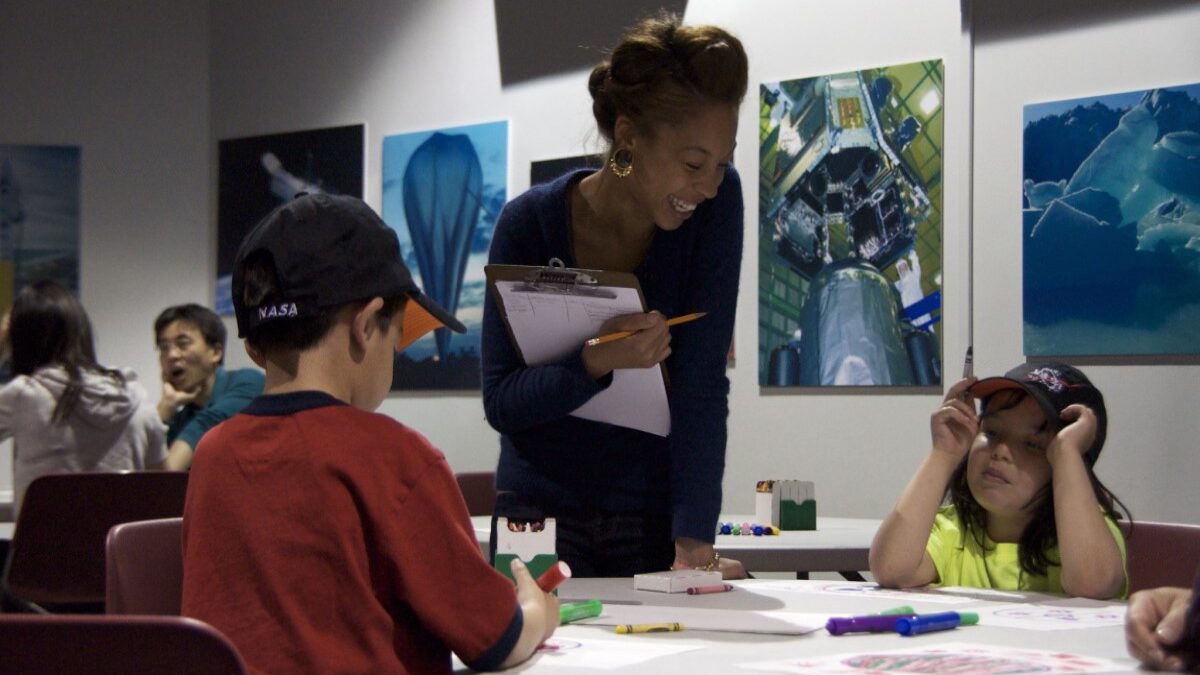
My daughter sits at the kitchen table in front of a workbook, pencil clenched in her little left hand and her tongue out in concentration. She looks up at me and grins. “Mama, this is so much fun!” She goes back to her work.
Row after row. Problem after problem. 9+1=____. 7+1=___. She pauses and then screeches in excitement. “I get to do 13 + 1!” she croaks in a stage whisper.
I’ve seen articles before about how we teach math in America. I’ve seen memes lampooning Common Core problem-solving. But I never made the effort to put the concepts together until that day, the day I watched my daughter gleefully and voluntarily work her way through a Kumon math book. I watched her, so thrilled to do worksheet after worksheet, and realized, “Baby, one day you’re going to hate this. “
So, as I’m wont to do, I began to fret. Some would say it’s too early to fret. She won’t be beginning formal math in school for a few more years. Who cares what curriculum they use? Who cares how they teach her? She likes math enough to seek out how to do addition problems—she’s obviously a “math person.” Right?
A few years ago, I wrote about the pillars of literacy. One of the key takeaways in teaching literacy is that it’s not all about phonics and rote memorization of sight words, although they too, have a role. Imaginative play, for example, is a key component of literacy because it increases situational vocabulary, and teaches that stories have a beginning, middle, and end. The last thing I’d want is to have my daughter’s love of reading beat out of her through endless phonics drills and spelling tests — which is why I choose her education based on the amount of play her curriculum allows.
At school, my daughter also “plays” with math. In her Reggio Emilia-inspired class, they use manipulatives to count and stack and sort. They play board games to teach addition by counting ahead spaces. But as I read article after article about the state of math education in America, I’m afraid in the higher grades teaching math will revert back to formulas, “tricks,” and, yes, row after row of math problems in a workbook.
This hits home for me. I hate math. I used to be good at it, and took calculus my junior year, so I guess I continued to be good at it—that is, good at following the tricks the teacher taught me, good enough to cram for an exam only to forget it the next day. Calculus is what made me realize I didn’t actually get math. I could calculate a derivative and an integral, and could give a basic definition, but I didn’t see math the way some of my peers could.
So if she’s willing to learn, I’m willing to teach her. I’m willing to give her a base of mathematics knowledge to fall back on if her curriculum fails her. I want her to remember that math is about problem-solving, and imagination, and of endless promise. Not numbers on a page. At her current math level, I don’t want her to just learn that 5+3=8. I want her to know that 25+3=28. And 45+3=48, and why that’s so neat and perfect in our base-10 system. So, how to do that?
1. Emphasize the Beauty
A musician wakes from a terrible nightmare. In his dream he finds himself in a society where music education has been made mandatory. “We are helping our students become more competitive in an increasingly sound-filled world.” Educators, school systems, and the state are put in charge of this vital project. Studies are commissioned, committees are formed, and decisions are made— all without the advice or participation of a single working musician or composer.
…..Waking up in a cold sweat, the musician realizes, gratefully, that it was all just a crazy dream. “Of course!” he reassures himself, “No society would ever reduce such a beautiful and meaningful art form to something so mindless and trivial; no culture could be so cruel to its children as to deprive them of such a natural, satisfying means of human expression. How absurd!” Meanwhile, on the other side of town, a painter has just awakened from a similar nightmare… —Paul Lockhart, “A Mathematician’s Lament”
When I think of math, I think of endless rules, labyrinthine constructions I have to pull out of the dark recesses of my brain to solve the numbers in front of me. Beginning math is not so bad. Even with numbers, symbols, and notations we can demonstrate patterns and sequences. But when we go that way, says Tara Holm in the Boston Globe, “what happens next in most schools is the road-to-math-Hades: the single-file death march that leads towards calculus.”
It’s quite a temptation, once formulas (even the basic 1+1) are introduced, to keep going down that path. This avoids teaching comprehensively about the decimal system, multiplication, or large numbers until much later. As Andy Kiersz describes in Business Insider, “formulas and algorithms are delivered with no context or motivation, with students made to simply memorize and apply them…This goes against what math is really about…Mathematics is one of humanity’s most creative and poetic endeavors. And it is a disaster that it isn’t taught this way to students.”
Manipulatives (like beads or acorns) are often used in early math, especially in doing simple addition. It’s how I taught my kids the first steps. But some programs, like Montessori, take it one step—actually many leaps—forward.
Montessori uses concrete manipulatives, which are often self-correcting, to introduce math long before symbols and equations. One way are the Golden Beads, used to introduce children to the decimal systems. “If units can be counted up to 9,” explains a Montessori school in Minnesota, “then so can tens, hundreds, and thousands, as long as they are bound together. “
When you are a young child, you probably cannot see beauty in the abstract, just like you can’t see math in the abstract. Montessori turns this around. The manipulatives themselves are beautiful and simple. As is the math.
We return to “A Mathematician’s Lament.” I might not remember much about the circle of fifths from my music theory class, but you put me in front of a piano, and I can play.
2. Master the Fundamentals
When is Cheryl’s birthday? When the ambiguous high school math problem went viral in April, complete with a handful of seemingly arbitrary answers, it sent many older Americans into a tailspin of confusion. Given the relatively cryptic clues provided, so many wondered, how could you possibly arrive at a definitive answer? — Mark Keierleber, “6 Reasons Why Singapore Math Might Just be the Better Way”
I don’t expect the majority of American adults to be able to solve this problem. In fact, it was not written for 11-year-olds in Singapore, as was incorrectly first reported. Instead, it was written for the Singapore and Asian Schools Math Olympiads. But it still concerns me that most adults didn’t have the first clue how to begin. Thus, still, is the inherent difference in Singapore math.
Between counting beads to learn addition to learning the symbols to represent addition, there is a space. For my daughter, the space was filled with a number line: 1 2 3 4 5 6.
If I asked her what comes two spaces after four, she would learn it’s 6. Then I use that same number line, and represent it thus: 4+2=6. Singapore math, similarly, has a “pictorial” phase to bridge this gap, known as bar modeling. Simple arithmetic equations, for example, are depicted as bars representing the quantities involved.
Eventually, just as Montessori’s Golden Beads allow concrete understanding of the core fundamentals of multiplication, Singapore’s method allows a student to eventually learn to model the answer to a complicated word problem like Cheryl’s birthday, without an overreliance on tips and tricks. With the Singaporean curriculum, according to math teacher Kevin Mahoney, each lesson builds on the other, “like LEGO bricks carefully situated next to the other. “
American publishers have hopped onto the Singapore math train, creating and selling, for example, Math In Focus, which I ordered for my daughter. Slapped right onto the front cover of their books says “Common Core.” One reviewer on Amazon wasn’t happy with this: “This is Common Core. ..VERY disappointed. This is false advertising.” Oh, dear, bless your heart. You’re mistaking a set of standards with a method of teaching math.
There are valid criticisms of effectively nationalizing curriculum requirements—after all, this is a federalist publication—but most popular criticisms of Common Core fall under two categories, paraphrased from James Goodman in Salon: a.) The parents just don’t understand the math—in effect, they get confused by things like Singapore Math’s pictorial representations and think their children aren’t learning the “normal way” to do things; b.) The implementation of the standards is all FUBAR’d, in part due to the high number of educators who don’t even understand mathematics, a point underlined by Elizabeth Green in the New York Times:
Carefully taught, the assignments can help make math more concrete. Students don’t just memorize their times tables and addition facts but also understand how arithmetic works and how to apply it to real-life situations. But in practice, most teachers are unprepared and children are baffled, leaving parents furious. The comedian LouisC.K. parodied his daughters’ homework in an appearance on ‘The Late Show With David Letterman’: ‘It’s like, Bill has three goldfish. He buys two more. How many dogs live in London?’
Marking a kid wrong for writing 15=5+5+5 as opposed to 3+3+3+3+3 is a teacher problem, not a standards problem.
Another complaint about Common Core implementation is the spiral approach, a diametric opposite of Singapore Math’s insistence on “mastery.” Concepts are cycled through the months and years, causing a mental whiplash for both students and teachers. Many of these programs, such as Everyday Mathematics, include student-led groupwork and endless discussion. They are decontructionist to the point of never giving the student a straight answer. They hop from topic to topic, and concerns about not fully understanding a concept are waved away by educators insisting that they’re covering the same topic the next year as well. There are elements of Common Core itself that encourage this kind of mathematical mess.
Many highly recommended programs have students attempt to solve a problem first without an immediate answer. But these students need a base to do so first, and then they need to be told the most efficient way to solve the problem. Otherwise, it’s as if you take a classroom of third graders and ask them to sit in groups and deconstruct the allegory inherent in “Animal Farm.” The next day, those very same third graders must memorize and recite the “I Have a Dream” speech. And then we measure their progress by grading essays on Shakespearean comedies.
3. Live the Story
He told the story of Carl Friedrich Gauss, the famous German mathematician, who was born in 1777.When Gauss was a schoolboy, one of his teachers asked the class to add up every number between 1 and 100. It was supposed to take an hour, but Gauss had the answer almost instantly.
‘Does anyone know how he did this?’ Juárez Correa asked.
A few students started trying to add up the numbers and soon realized it would take a long time. Paloma, working with her group, carefully wrote out a few sequences and looked at them for a moment. Then she raised her hand.
‘The answer is 5,050,’ she said. ‘There are 50 pairs of 101.’
Juárez Correa felt a chill. He’d never encountered a student with so much innate ability. He squatted next to her and asked why she hadn’t expressed much interest in math in the past, since she was clearly good at it.
‘Because no one made it this interesting,’ she said. — Joshua Davis, Wired magazine
Everyday Mathematics does get one thing right: the focus on conceptualization over speed and flashcards. The best mathematics programs—many developed for mathematically advanced gifted students, such as Russian School, BEAM, Math Circle, and the Art of Problem Solving—emphasize “conceptual knowledge as a tool to predict, explore, and explain the world around them.”
Richard Ruscyk, the creator of Art of Problem Solving and its younger equivalent, Beast Academy, says this requires “creativity, grit, and strenuous mental gymnastics.” His programs presents math problems first, along with leading questions, and only after students work on them on their own do they receive the correct algorithm.
The Art of Problem Solving is designed for gifted students, but a child doesn’t have to be gifted to enjoy Dr. Wright’s Kitchen Table Math, recommended by and sold through AOPS as an intro to math for very young children. As they grow, they can also follow the math novel series “Life of Fred.” Its creator, Stanley Schmidt, believes children should learn learn by reading and immersing themselves in a story, self-teaching as they go along. Instead of kids wondering, “When are we going to use this stuff?” they realize they do math every day, and not always with someone behind their shoulders helping.
I like that sometimes the story takes over in “The Life of Fred.” This isn’t some thinly veiled attempt to “relate” to kids by making a kid protagonist who encounters math problems in the wild, like a Cheshire cat riddling Alice with differential equations. This is a truly hilarious and entertaining story about a boy. There happens to be math involved.
Kumon Isn’t So Bad, Either
Although my daughter prefers learning to read using a blend of whole language and sight reading—she meets exhortations to “sound it out” with utter disdain—we supplement with the excellent BOB Books series with its familiar cvc phonetic refrain: “Mat. Mat sat. Mac. Mac sat. Mat sat on Mac.”
Similarly, we could do much worse than telling a child that 1+1=2 or having them memorize that 5×3=15. So there is the Kumon program, with the workbooks my daughter so loves. There are the in-depth lectures on Khan Academy. They are not innovative, but they are tried and true. Even Singapore math involves memorization and drills.
I’m far from a math expert (remember? I hate math), and so whatever I do is going to be a combination of things with a “what feels right” approach to supplement whatever curriculum my kids get at school. The kids and I already spend a lot of time playing around with an abacus, adding and subtracting and learning pre-multiplication skills. To them, it’s just a another toy.
One of my cherished memories is coming home one day to a huge homemade color-coded multiplication chart. My mother’s excitement with it was contagious, and I spent hours looking at the patterns on that chart. To this day I, the girl who hates rote memorization, can multiply like a boss. Research shows resoundingly that memorizing basic math functions cold through repeated practice is the best way to prepare kids for upper-level math.
In the course of writing this article, I attempted to find a way to visualize addition and skip counting for my daughter. I slapped two 8×11 homemade charts on a nearby wall, and forgot all about them. Two days later, my daughter came to me mystified. “What are those numbers over there?” she asked. I grinned and explained. “Show me! Show me!” she exclaimed.
In the end, neither one of my kids needs to be the best in a subject, or learn a topic earlier than their peers, or become superstars in science and math. If learning makes them this excited throughout their lifetime, then I will have done something right.









